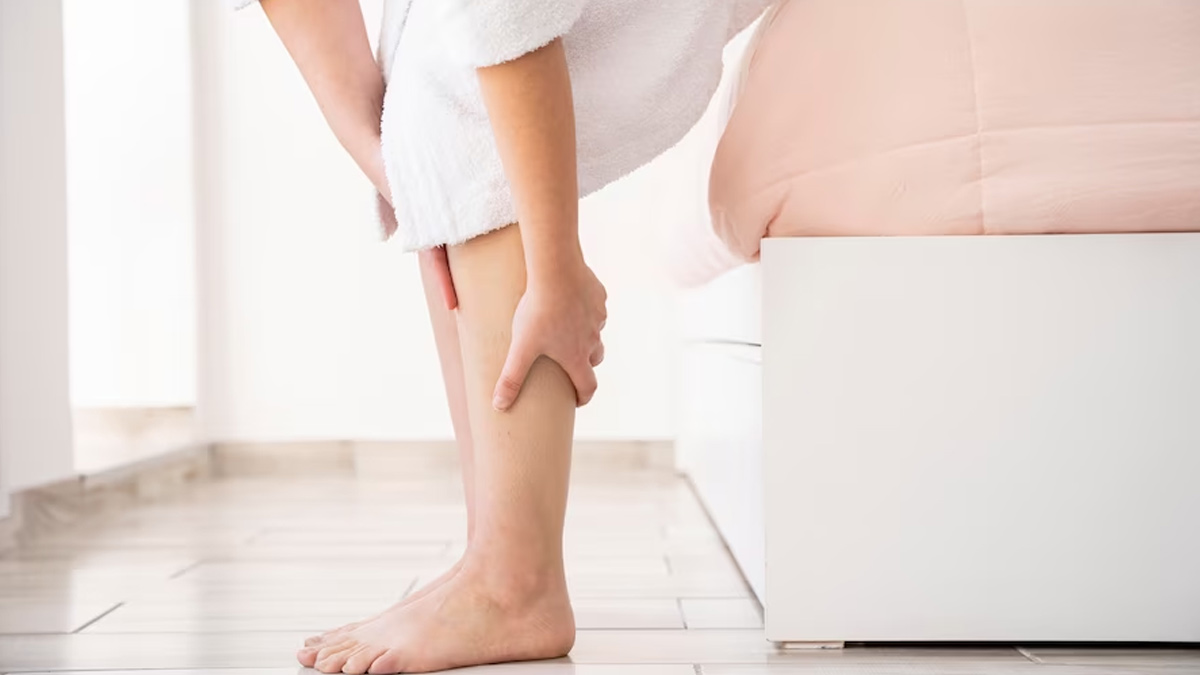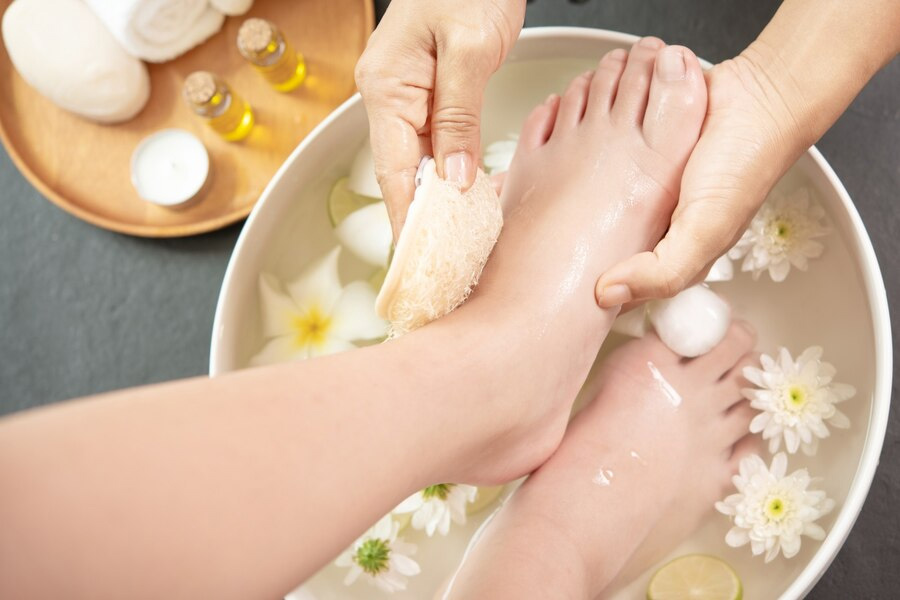
It is important to remove dead skin from your feet. It is an essential part of foot care that can help keep your feet smooth, healthy, and free from issues like calluses and cracked heels. However, it's crucial to approach this process with care to avoid any potential risks. Here are some tips on how to safely remove dead skin from your feet and be aware of associated risks:
Table of Content:-
Tips for Safe Dead Skin Removal
Soak Your Feet
It is advisable to soak your feet in warm, soapy water for about 10-15 minutes. This helps soften the skin, making it easier to remove dead skin cells.
Also read: Removes Dead Skin By Following These Simple Tips For Exfoliation
Use a Pumice Stone
Gently rub a pumice stone on the dead skin areas. Make sure to do this with a light touch to avoid abrasions or injuries. A pumice stone can help exfoliate and remove dry, dead skin.
Foot Scrubs
Consider using a foot scrub or exfoliating scrub with natural ingredients. Apply the scrub in a circular motion to help remove dead skin cells. Rinse thoroughly.

Foot File or Pedicure Rasp
If there is an appearance of callus and rough area then a foot file and pedicure cap be used to smoothen it. Use it gently and avoid excessive pressure to prevent skin damage.
Moisturise
After removing dead skin, apply a rich moisturiser or foot cream to keep the skin hydrated. This helps prevent the formation of new calluses.
Wear Comfortable Shoes
Choose comfortable, well-fitting shoes to prevent friction and reduce the risk of calluses and dead skin buildup. Look for boots with extra memory foam cushioning and a large toe box to accommodate any uncomfortable joints or breadth. Choose boots made of soft leather or suede to avoid friction and pressure points.
Regular Maintenance
Make foot care a regular part of your routine. Regularly trimming toenails, moisturising, and removing dead skin can help maintain healthy feet.
Risks to be Aware of
Over-exfoliation
Excessive scrubbing or exfoliation can damage the skin, leading to irritation, redness, or even open sores. Avoid overdoing it, especially if you have sensitive skin.
Cutting Calluses
While it's essential to manage calluses, cutting them at home can be risky. It's best to seek professional help if you have severe calluses or foot conditions.
Medical Conditions
If you have diabetes, poor circulation, or other medical conditions affecting your feet, consult a healthcare professional before attempting any aggressive dead skin removal.
Allergic Reactions
Be cautious about the products you use for dead skin removal. Some individuals may be allergic to certain ingredients in foot scrubs or exfoliants.
Also read: Home Remedies to Get Rid of Dead Skin Cells
Always listen to your body and stop any process if you experience pain, discomfort, or signs of irritation. If you have concerns about your foot health or need assistance with dead skin removal, it's advisable to consult a podiatrist or doctor. They can provide personalised advice based on your specific foot condition and medical history.
Also watch this video
How we keep this article up to date:
We work with experts and keep a close eye on the latest in health and wellness. Whenever there is a new research or helpful information, we update our articles with accurate and useful advice.
Current Version